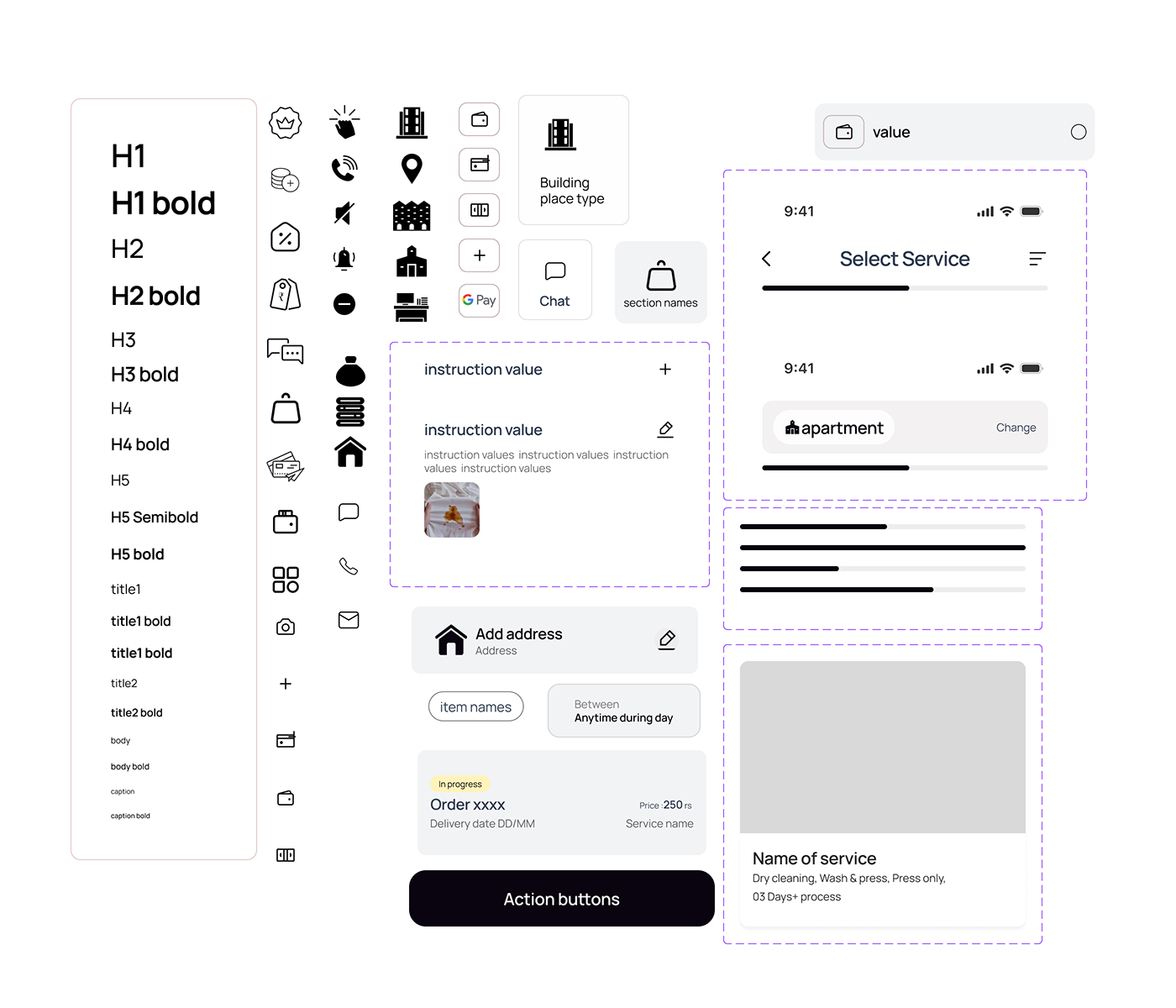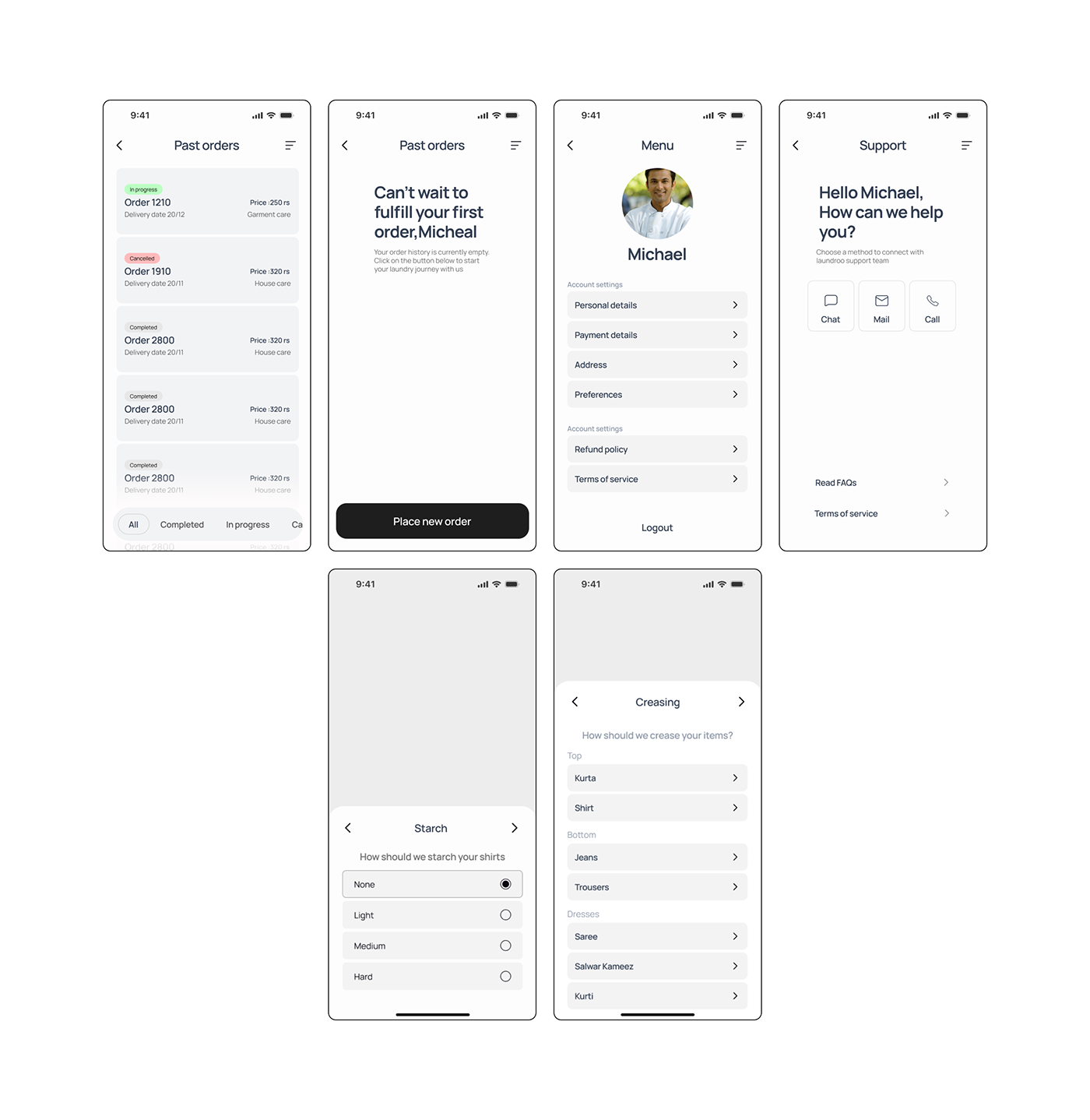
Project overview
This project aims to design a user-friendly and efficient laundry app, for a laundry provider Laundroo, focusing Indian market. The goal is to simplify the laundry process by connecting users with laundroo via a seamless and intuitive digital platform. Despite the growing smartphone usage in India, the research shows the laundry sector remains largely unorganized and traditional. The challenge is to understand the needs of potential users, adapt to the local context, and design a solution that brings convenience and modernity to this daily chore.
Personal experience
While living in multiple with hectic work schedules it was very challenging to find time for laundry because my busy lifestyle. I often outsource my laundry services to traditional laundromat which is often leads to physical trips with long ques. The lack of digital solutions in this space, and the potential to simplify the process, sparked my interest in this project.
Let’s Get Started
What I’d like to do now is to identify the UX design process and define each stage before going into more detail throughout the case study. Take a look at the graphic below to get an idea of the outline I followed throughout this process:

Empathize
At the very beginning of our project, perhaps the most important first part of the process is researching. During this stage, we begin to understand our user base (hence empathize) and validate (or invalidate) some of the assumptions I have as UX researcher. Along with creating a detailed research plan, we’ll study available materials online, conduct interviews, analyze existing competitors, create empathy maps, and more.
Competitive research
I started my research with analyzing existing competitors available on the market. I put together a checklist to compare other laundry applications in India to see what features laundroo might need. Below you can see my detailed results:

General analysis on user experience, user interface and available feedback & ratings on online

Feature analysis between applications
User research
After analyzing the competitors i started to understand the userbase. Some of my initial research goals were determining the demographics of target users, their laundry outsourcing habits, and what are the factors that lead them to use laundromats and other available services both online and offline.
I started visiting laundromats and created some data about the users and then i did some research through online for further analysis.
After that I derived the user segment for the application to conduct qualitative research

Below Shows the questions I asked them to get know their laundry habits, motivations, frustrations and others information about them.

These are the key insights i got from talking with the userbase.

Persona
The last part of my research included creating a persona, which is creating an identity based on the information gathered from my interviewees, and sum total of my research. This helps me zero in on the type of person I’m creating this feature for. All design decisions going forward were based around this persona. The person I created is-
“Michael” a 38-year-old Chef who’s working on five-star restaurant who needs his restaurant ready for work.

Micheal 38 year old chef
Here is a look at how we synthesized the research so far to map out a typical day for “Micheal”. It was another building block in understanding our user base, and what might be going through their minds on a daily basis. In the end, I also tried to identify certain obstacles micheal might when placing a laundry order. All of which I address down the line.

Define
This is where we look at our research and begin to synthesize it. We start to understand the framework of our new additions with things like a feature roadmap and define the goals we’d like to achieve from a business and technical standpoint.
The first graphic is a chart that lists the goals laundroo has as a business (goals from business POV), goals the user will have (user goals), and what’s possible from a technical point of view (technical POV goals). I will consider all choices moving forward:

From here, we were able to create what’s called a feature roadmap, which is a checklist of attributes Laundroo will contain by analyzing our competitors and talking to users. We’ve also ranked them in their order of importance.

After the feature roadmap, I went on creating sitemap, this is how we organize features structurally, labeling each component of the new feature and where it exists in relation to everything else. We develop information architecture at this point.

After establishing the information architecture, user flow diagram was created to demonstrate the potential path a user may take when navigating through the app. This included important processes such as the sign-up procedure and order placement. These user flows help to visualize the user's journey and identify any potential issues that may disrupt a seamless experience.

Ideation
Here we build wireframes, build a UI kit.
We also develop our product even further by introducing lo-fidelity wireframes. Our plan here is to give us a couple of solutions based on our research thus far and our IA (information architecture).
Below you can see the lo-fi wireframes


After further ideation, i developed UI kit for laundroo
The focus was on keeping simple interface, reflecting the app's purpose – laundry services. This approach aims to achieve two things:
User Association: The clean and uncluttered design subconsciously evokes feelings of cleanliness, aligning perfectly with the app's function of laundry care.
Market Positioning: By drawing inspiration from established minimalist apps like Uber, Laundroo establishes itself as a user-friendly and modern option in the competitive laundry service market.

Prototype
after developing ui kit, it was time for me to make high fidelity wireframes below are some screens i created for the application

User onboarding

Placing order from the application

Some other screens
Validation and next steps.
Upon completing the prototype, it was time to do the testing,
what i did create was a usability test from the prototype, for this i chose the key task ie, placing a laundry order from application, I tested the product with some fellow colleagues and friends who were previously outsourced laundry,
main goal was to test how quickly they can order from the application, where they fell off during the ordering process and other details.
what i did create was a usability test from the prototype, for this i chose the key task ie, placing a laundry order from application, I tested the product with some fellow colleagues and friends who were previously outsourced laundry,
main goal was to test how quickly they can order from the application, where they fell off during the ordering process and other details.
Every participant completed task, but the speed was of completion was different, and most of them liked the simplicity of the application especially those people who ordered from other laundry applications.
next steps.
Now its time for reflections, overall, it was an amazing experience, i am happy with the way i did structured the IA, the research processes and ideation part, however I thought I could put more effort into the branding such as its tone and other parts.
Thank you for reading, Have a great day ahead.


